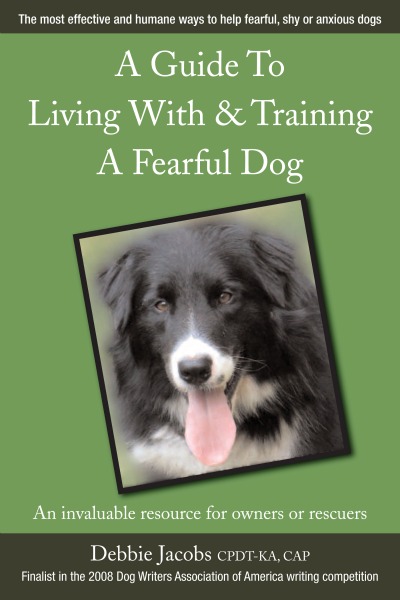
As I began to struggle with Sunny’s challenges and I learned about fear based behaviors in dogs I realized that a giant hurdle in the way of success for these dogs was their handler’s beliefs about the best ways to help them. I knew this because I held beliefs about fear in dogs that were passed onto me by trainers and other dog owners, and unfortunately by a popular TV trainer, and they were not helpful. The knowledge most of us have regarding how to work with fearful dogs is limited to some version of, ‘make them deal with their fear until they are over it’, and more and more includes the idea that any resistance on a dog’s part to do what we ask is based on some innate desire to be dominant, especially if their resistance includes any form of aggression. These dogs are often labeled as ‘stubborn’ or ‘stupid’, both unfair characterizations of their behavior.
I created the Fearfuldogs.com website to provide foundation information for handlers of fearful, shy or anxious dogs and subsequently created the ebook, A Guide to Living with & Training a Fearful Dog (which in 2008 was a finalist in the Dog Writers Association of America’s annual competition). I am excited to share that soon the book will be available in hardcopy, a beautiful paperback version that I am proud has made it into the real world (as opposed to just the digital).
Both the website and the book contain the advice and information that I wish had been handed to me when I first realized that Sunny was a fearful dog. I would have done many things differently with him at the start and I think it would have made his life easier and more comfortable. They also contain the information which I learned as I ventured down the path of studying how fear affects bodies, brains and behavior. My goal is to provide information for handlers of fearful dogs so they can look at their current understanding of fear in dogs and see how it affects their responses to their dog.
When we are working with a fearful dog the onus is on us to respond in ways which help them gain skills and feel less anxious. At any moment we’ll be called upon to give our dog feedback, and how we think about our dog’s fear based behaviors, will affect the feedback we provide. It is this step in the process of rehabilitating a fearful dog which continues to motivate me in ways I am grateful to have discovered.
In the New Year I want to thank all of you for your support and for your feedback. Each day gives us the opportunity to be better, more compassionate and skilled caretakers of the dogs that come into our lives. I hope you enjoy the journey with your dog as much as I have with mine.
